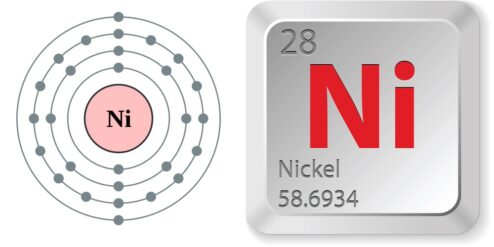Introduzione: Nickel allergy is a common form of contact dermatitis, an allergic reaction that occurs when the skin comes into contact with a foreign substance. This condition is often associated with exposure to nickel, a metal commonly used in jewelry, clothing accessories, and various household items. Understanding the basics of nickel allergy, its common triggers, the role of skin contact, and its symptoms, diagnosis, and treatment options can help individuals manage this condition effectively.
Understanding the Basics of Nickel Allergy
Nickel allergy is a hypersensitive immune response to the nickel metal. Once sensitized to nickel, the body’s immune system recognizes it as a foreign substance and triggers an allergic reaction. This allergy is more common in women and girls, likely due to increased exposure to nickel through jewelry and other metal items. Nickel allergy can develop at any age and usually lasts a lifetime. The severity of the allergic reaction can vary among individuals and can depend on the duration of exposure.
Common Triggers of Nickel Allergy
Nickel is found in a wide range of items, making it a pervasive allergen. Common sources of nickel include jewelry, particularly earrings and other body piercings, clothing fasteners like zippers and bra hooks, eyeglass frames, coins, and cell phones. Additionally, nickel is also present in certain foods like nuts, chocolate, and fish, and in some medical devices. Even minute amounts of nickel can trigger an allergic reaction in sensitive individuals.
The Role of Skin Contact in Nickel Allergy
Skin contact plays a crucial role in nickel allergy. The allergic reaction occurs when the skin comes into contact with items containing nickel. The body’s immune system recognizes the nickel as a foreign substance and triggers an inflammatory response, resulting in symptoms such as redness, itching, and swelling. Prolonged or repeated skin contact with nickel can exacerbate the allergic reaction. In severe cases, blisters may form, and the skin may become thickened and discolored.
Symptoms and Diagnosis of Nickel Allergy
Symptoms of nickel allergy usually appear within 12 to 48 hours after exposure and can last two to four weeks. They include redness or rash, itching, swelling, blisters, and skin changes like dry patches and discoloration. If you suspect a nickel allergy, it’s important to see a dermatologist. The diagnosis is usually made based on a physical examination and a detailed medical history. A patch test may be performed to confirm the diagnosis.
Treatment Options for Nickel Allergy
The primary treatment for nickel allergy is avoidance of nickel-containing items. Over-the-counter creams and ointments can help relieve symptoms. In severe cases, a doctor may prescribe corticosteroid creams or oral corticosteroids. In some cases, a process known as desensitization may be used, where small amounts of nickel are applied to the skin over time to reduce sensitivity.
Preventing Nickel Allergy: Lifestyle and Tips
Preventing nickel allergy involves avoiding contact with nickel-containing items. Choose jewelry made of materials like surgical-grade stainless steel, titanium, or 18-karat yellow gold. Use nickel-free fasteners for clothing and accessories. Be aware of nickel in household items and try to minimize contact. In the kitchen, use stainless steel or cast iron cookware instead of nickel-plated utensils. If you must handle nickel-containing items, wear gloves to protect your skin.
Conclusioni: Nickel allergy is a common and often lifelong condition. Understanding the triggers and symptoms can help manage the condition effectively. While there is no cure, avoiding nickel and taking steps to minimize exposure can significantly reduce the severity of symptoms and improve quality of life.
Per approfondire:
- American Academy of Dermatology: Provides an overview of nickel allergy, including causes, symptoms, and treatment options.
- Mayo Clinic: Offers detailed information on nickel allergy, including prevention and management tips.
- National Eczema Association: Explains contact dermatitis, a condition often triggered by nickel.
- WebMD: Discusses nickel allergy, with a focus on jewelry as a common trigger.
- Cleveland Clinic: Provides comprehensive information on nickel allergy, including diagnosis and treatment options.


